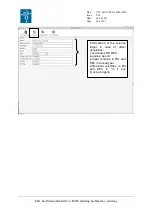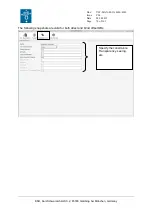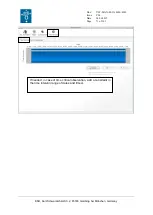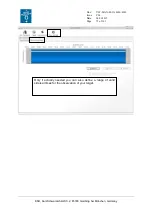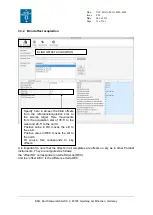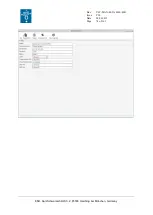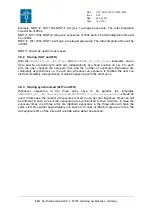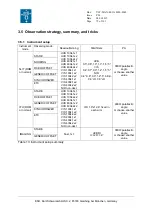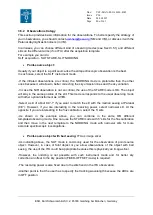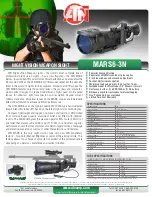
Doc:
Issue
Date
Page
VLT-MAN-ESO-14650-4942
P96
24.06.2015
83 of 161
ESO, Karl-Schwarzschild-Str. 2, 85748 Garching bei München, Germany
According to the ETC and measurements, one must not try to observe stars brighter
than magnitude 3 because it will lead to saturate the detectors:
It is the case of an A0V or O5 or F0 stars observed under a seeing of 0.8”, at an airmass of
1.2, with the slits 0.5” in the UVB, 0.4” in the VIS, 0.4” in the NIR and integration times of 0.1s
in the UVB and VIS and the minimum DIT 0.66s in the NIR.
In case of saturation indicated by the ETC for the object, try to reduce the exposure time if
possible, and to choose a narrower slit.
Usually the OBs have to be observed within the specification, i.e. with better conditions than
requested but in such case, for bright objects the detector can saturate leading to time
losses, useless data, remnants in different arms, and possibility to classify the OB as not
feasible (no repeated observation). Thus we strongly encourage the users to check their
objects with the ETC, and to avoid observing extremely bright objects.
Ditto we encourage the users to check that the counts never enter the extrapolated regime of
readout in the NIR.
A diaphragm mode
has been tested. It allows to observe ultra-bright targets (down to
magnitude -4). It opens new windows on “well known” objects but still without spectra
especially in the infrared due to their brightness.
A report as well as the reduced data obtained during the tests is available at:
http://www.eso.org/sci/facilities/paranal/instruments/xshooter/news.html
It is not yet decided whether this mode will be offered to the community.
3.5.5 Readout times in the UVB and VIS arms: minimization of overheads
Because the UVB and VIS detectors are sharing the same FIERA controller, both detectors
cannot be read at same time. Therefore it may happen that one arm, although its exposure is
already finished, has to wait the end of the read-out of the other arm. To minimize this dead-
time, one should increase a little bit the exposure time in the UVB or VIS arm. Then, once the
first image is finished and being transferred, the other arm is still integrating.
Then the second image of the remaining arm will be read.
In addition, the VIS arm exposure starts 5s later than the UVB arm, and the NIR arm start is
delayed by 10s.
For example, if you select a read out in slow, unbinned mode, and expect to be photon
starved in the UVB, then according to Table 15 you should make the VIS integration at
least 89 s shorter than the UVB one.
The readout time of the NIR is very short ~1s and does not interfere with the UVB and VIS
because it is using a different controller (IRACE).

